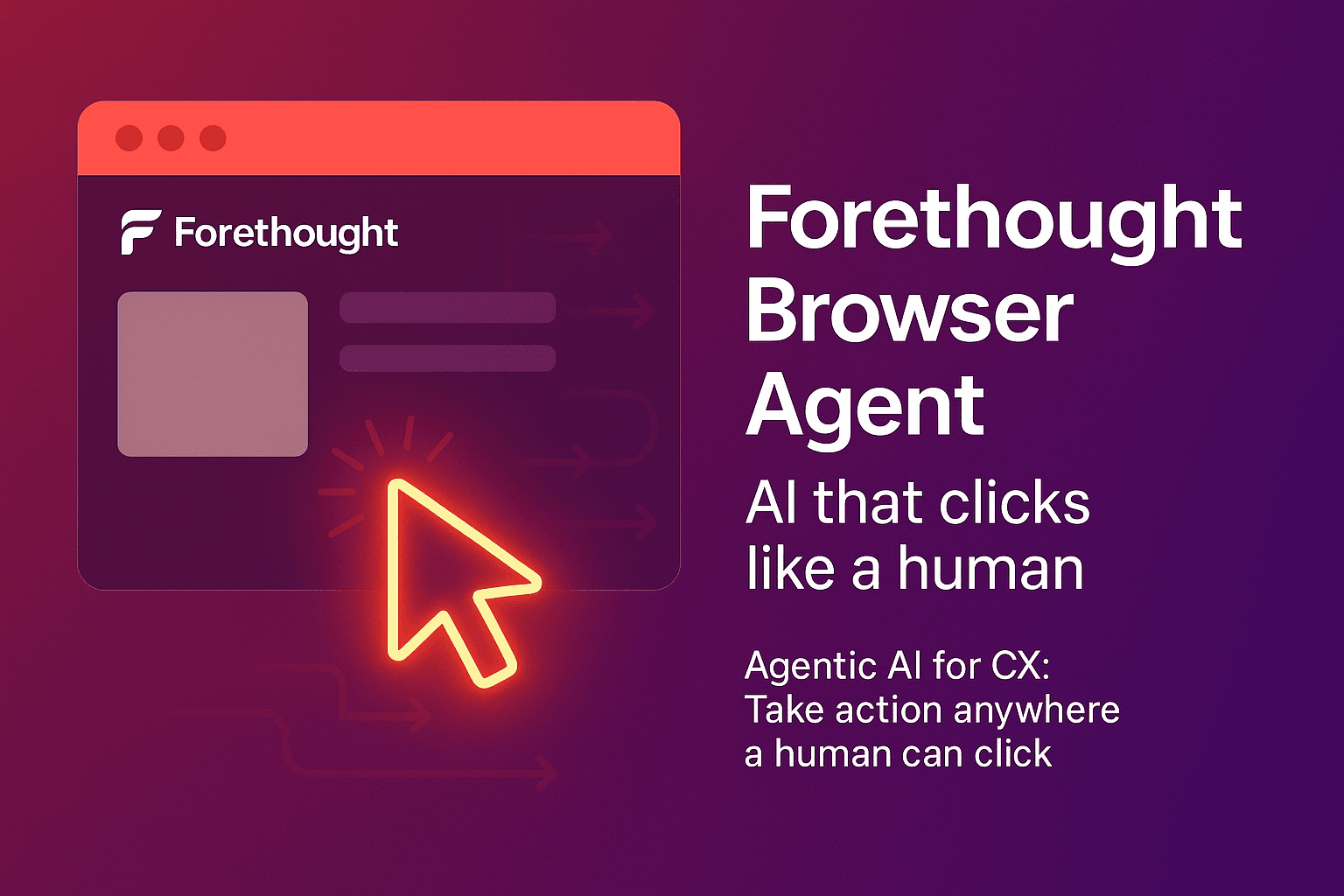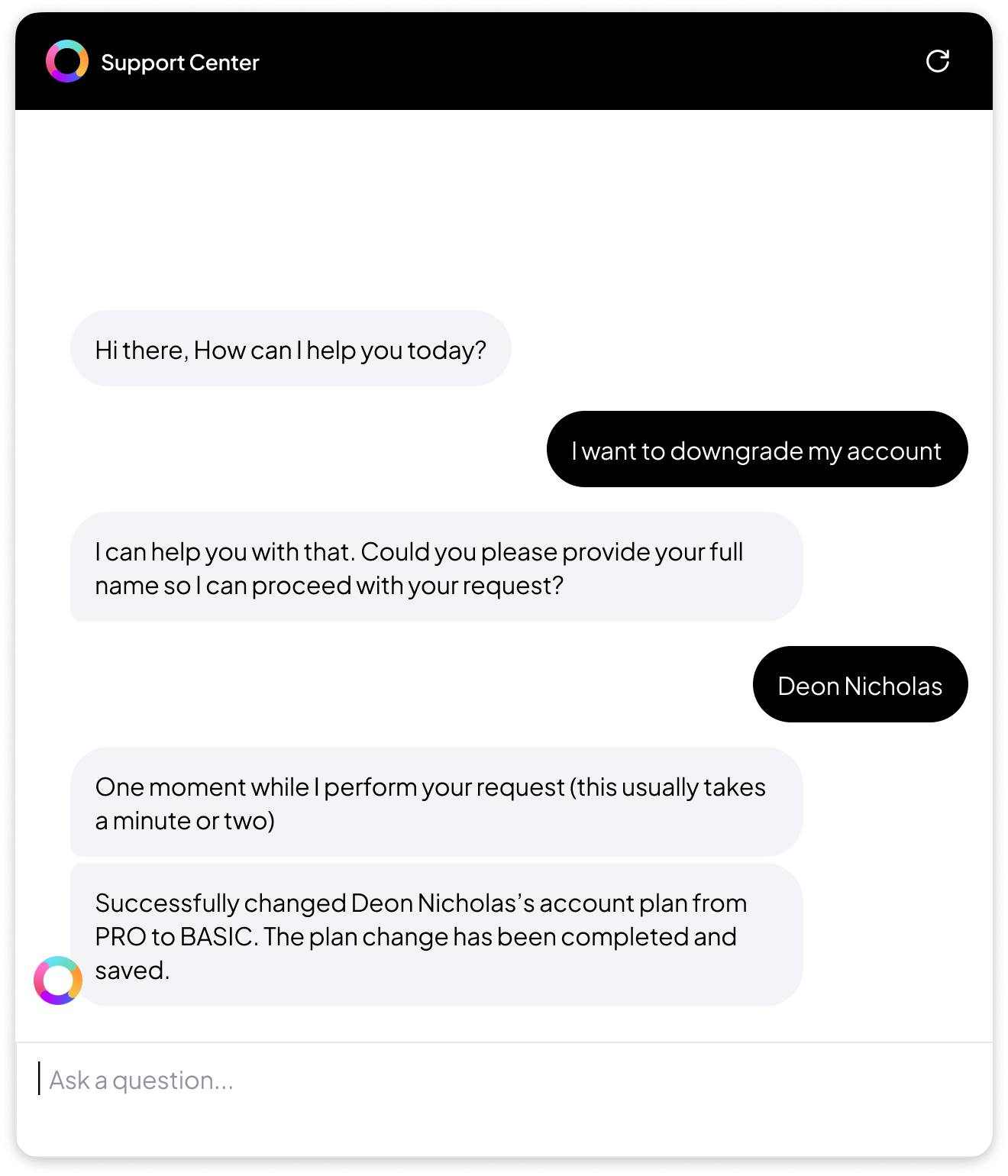October 31, 2025 • 4 min read
Forethought Launches Browser Agent, Pushes the Boundaries of Agentic CX Automation

CX Analyst & Thought Leader
October 31, 2025

Agentic AI (AI that both analyzes and acts autonomously) is dominating the current CX landscape. While enterprises are more than ready to adopt and integrate Agentic AI at scale, many are facing the same roadblock: their existing systems aren’t built for it.
Agentic AI needs a way to act inside business systems, not just analyze data or respond to queries. Traditionally, that access comes through APIs — the digital pathways that let one system send structured commands to another. APIs are clean and secure.
But in the enterprise world, they’re also rare. According to Postman’s 2025 State of the API report, only 24% of enterprise systems are accessible via API. The remaining three-quarters require endless integration projects, partial automations, and a lot of manual clicking to bridge the gap that has long been the Achilles’ heel of CX automation.
That’s the barrier Forethought just broke through.
From Answering to Acting
That’s exactly what Forethought’s new Browser Agent delivers. It allows AI to perform real tasks inside any web-based system without APIs, middleware, or backend engineering.
AI has spent the last few years learning to answer questions. The next era is about action and outcomes.
Suddenly, the 76% of workflows that live inside browsers are no longer off-limits to automation. That old returns portal? Fair game. The internal billing tool that nobody dares touch? Now, the AI can navigate it like your most seasoned support agent.

Upwork’s GM and VP of Customer Experience, Brent Pliskow, called it “the next step in how AI can help us deliver exceptional customer experiences.”
With Forethought’s Browser Agent, AI’s role can shift from being a conversational interface to an operational one.
Antoine Nasr, Forethought’s Head of AI, summed it up well: “Agentic AI isn’t just another technology trend; it’s redefining how businesses operate and build value.”
How Forethought’s Browser Agent Actually Works
Forethought’s Browser Agent is surprisingly simple:
Your team defines a workflow. When triggered, the Browser Agent opens the system and finds the relevant record, completes the action, verifies success, and notifies the customer – all while leaving a complete audit trail.

Let’s look at a potential use case: say a user wants to change their subscription plan. Instead of routing the ticket to a human agent who logs in and clicks through five pages, the Browser Agent signs in, updates the plan, confirms it’s done, and closes the loop with the customer.
Designed for the Realities of Enterprise CX
AI governance and trust are top of mind for Forethought.
Browser Agent isn’t some free-roaming bot. It comes with domain allow-listing, encrypted credentials, approval checkpoints, and simulation modes for testing. Every action is recorded for quality assurance and compliance.
It also supports the full range of modern communication channels (chat, email, voice, etc.) so it can act wherever your support workflows begin.

Many organizations are trying to consolidate AI orchestration across fragmented CX channels. Forethought’s approach ties those threads together under a single platform.
Why It Matters for CX Leaders
If you lead customer experience at scale, you already know the challenges: multiple systems, constant integration bottlenecks, and rising customer expectations. Yes, the Browser Agent makes workflows faster, but it also changes the economics of support.
Instead of throwing more people at manual processes, CX leaders can now deploy AI that handles those tasks end-to-end, securely, accurately, and at enterprise scale.
Grammarly’s Head of Care, Jakub Kepczynski, described the results this way: “We’ve seen a clear lift in quality and speed of support. Forethought’s AI delivers faster resolutions, more personalized interactions, and smoother experiences across every touchpoint.”
That’s the kind of impact that moves the needle.
